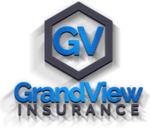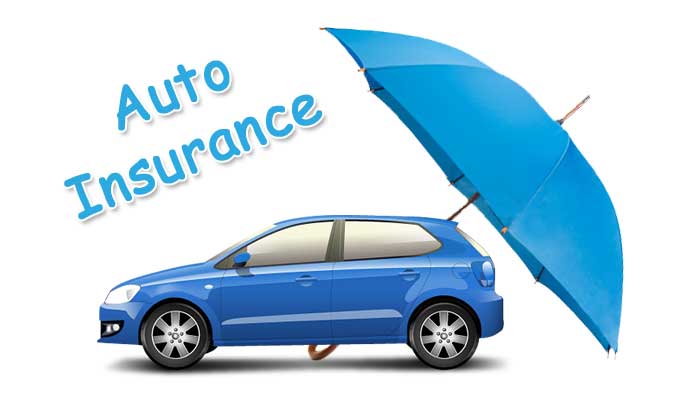There are a lot of numbers on an auto insurance policy. Do you know what they all mean? Most people don’t! We will take you through all the number and coverages of an auto insurance policy so you know exactly what you are covered for and what your money is paying for. This article will explain it all, but we would love to answer any questions you have as well as provide some quote for you! Please visit us www.grandviewinsure.com/quotes/
We will be looking more specifically at a Utah auto insurance policy. Insurance is regulated on a state level, so each state has different laws, but the coverages on an auto insurance policy are very similar state to state. There are 2 basic parts of any auto insurance policy. Liability coverage, and damage to your own car coverage. Auto liability insurance is what is required by law for everybody driving on the roads. Coverage for damage to your own car is optional. Although if you have a loan on your car, the bank will likely force you to have coverage for your own car to cover their financial interest in the vehicle. Let’s get into liability coverage first.
Bodily Injury Liability
When you look at your auto insurance policy, the fist thing you will see is the coverage limits for bodily injury liability. They are usually going to be a “split limit”, but also could be a “CSL” or combined single limit. If you have split limits, you will see something like $50,000/$100,000. This means that if you were to be at fault in a car accident, your policy would pay up to $50,000 per person and $100,000 per accident for bodily injury for whoever you injure. If you have a CSL there will only be one number like $100,000. This simply means that in the event of an at fault accident you would have $100,000 to be used however it is needed for bodily injury and property damage.
Property damage
If you have split limits there will be another number to indicate the property damage limit. This coverage is very self explanatory. It pays to fix whatever you damage in a car accident. This is most commonly another vehicle, but could be anything like a fence, a power pole, or even a house. If you have a CSL this coverage is included in the CSL limit.
UM/UIM
These stand for uninsured and under insured motorist coverage. This is a part of your auto insurance policy that pays to you! If somebody else causes a car accident that you are involved in, their policy would pay for your bodily injury. But what if they don’t have insurance? Or, what if they don’t have enough insurance coverage to cover your bodily injury? That is where this coverage comes in. If the person at fault does not have an auto insurance policy at all, the coverage for uninsured motorist would pay to you up to it’s policy split limits or CSL just like in the previous section. If the personal at fault in an auto insurance accident does have a policy but the limits are insufficient to cover the bodily injury caused, then the under insured coverage would step in and pay up to it’s policy limits AFTER the at fault party’s policy pays all that it can. These are very important coverages in any auto insurance policy because there are a lot of drivers with very low bodily injury limits on their auto insurance policy.
Example:
you are in your car by yourself and are hit by another driver. You are injured and your bodily injury costs reach $150,000. The driver that hit you has an auto insurance policy that has $100,000/$300,00 split limits. The most their policy is going to pay for you injuries is $100,000. After they pay that amount, your own policy would step in and pay up to it’s policy limit under the under insured motorist section of the policy.
State Minimum
Each state has different insurance laws, but they all have a “state minimum” liability limit. Utah’s is $25,000/$65,000,/$15,000. These are the lowest limits of liability allowed to be on any Utah auto insurance policy. This is important to note for a couple reasons.
First, knowing that there are drivers with limits this low is a good reason to make sure your uninsured and under insured motorist limits are high enough to cover a serious accident in the event you need it.
Second, knowing how much auto accidents can cost is a good reason to make sure you have much higher limits than the state minimum. If someone that has the state minimum liability limits causes a serious accident, they could potentially be paying for it for the rest of their lives. There is absolutely no reason to have liability limits that low. It’s way to risky. At Grandview Insurance, we recommend a minimum of $100,000/$300,000 split limits.
PIP
Personal injury protection. This is not required on auto insurance policies in all states, but it is in Utah. All Utah auto insurance policies must have a minimum of $3,000 of personal injury protection coverage. This is a coverage that pays to you along with anybody in your car that sustains injury regardless of fault. One nice feature that is also included is that it also covers you while you are a pedestrian. So, if you are crossing the road and get hit by a car you can claim, up to the policy limit, the PIP to be paid to yourself!
Coverage for your own car
Comprehensive
Coverage for damage to your own car is optional. The only exception is if you have a loan on your car, the bank will most likely require you to carry full coverage on it to protect their financial interest in the vehicle. Comprehensive coverage is also referred to as “other than collision”. It covers your car for everything other than a collision like fire, flood, theft, etc… Comprehensive also covers a collision with an animal. Even though it is a collision, it is covered under the comprehensive section. I see this a lot in certain parts of Utah, there are deer around the road that get hit a lot, they can do an amazing amount of damage to a vehicle!
Comprehensive also covers windshield repair and replacement. A lot of people like to lower their comprehensive deductible for this reason, especially if they live in or drive through places where there is a lot of construction happening.
Collision
Collision coverage covers damage to your own car in a collision in an at fault accident. If you don’t have this coverage for your car and you cause an accident, your policy will pay to fix the property that you damage under the property damage section discussed above but there will be NO coverage to repair or replace your own car. If you don’t have this coverage, but are involved in a NOT at fault accident, the at fault party’s policy will pay to repair or replace your car under their property damage section. There is a deductible that applies to this coverage, you pay the deductible, and the company pays the rest of what it costs to repair or replace your car.
If an uninsured driver causes an accident with you, this coverage will still pay to repair or replace your car, minus the deductible.
UMPD
What if you elect to not have collision coverage for your car, and somebody hits you that does not have insurance? That’s where this coverage comes in. There is often a small deductible that applies to this coverage. It stands for uninsured motorist property damage. It simply covers damage to your car caused by an uninsured driver. You cannot have this coverage along with collision coverage, they are mutually exclusive.
Towing/Roadside Assistance
These 2 coverages are often combined with each other. Each company does it a little differently, but they all cover the same things. They will cover, up to the policy limit, a tow and/or roadside assistance. Whether its a dead battery, run out of gas, a flat tire, etc… They will cover it all. It is a very convenient coverage and very inexpensive.
Rental Car Coverage
Your auto Insurance policy also has a option to have rental car coverage. If your car is damaged in an accident, the company will pay for a rental car while your car is being worked on. There is a policy limit to this as well. It will have a per day limit as well as an overall payout limit. for example they might pay up to $40 per day and $1,200 total for a rental car. This is also a relatively inexpensive coverage.
What Really Matters
Obviously price is always a factor. But, if your policy has very low liability limits, it’s not worth paying anything for. In most cases it does not cost a lot to increase liability limits including UM/UIM. Visit us at www.grandviewinsure.com/quotes/
Let us give you an expert opinion of your current policy. We can also probably help you out and get a better policy for a better price.

